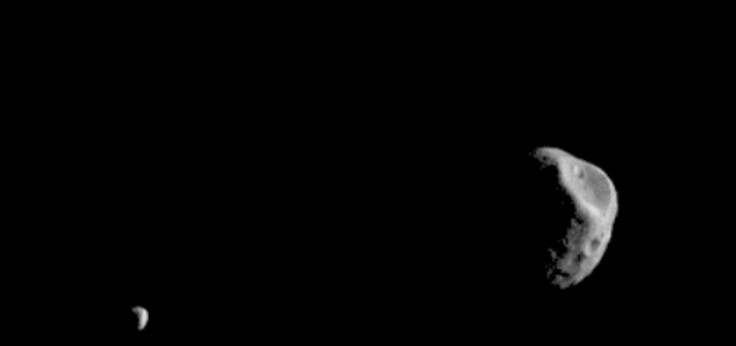Mars' moon Phobos captured by NASA's Odyssey Orbiter
The images of Martian moon were taken to develop better insight into the origin and composition of Mars' satellites.
The two moons of Mars remain one of the most mysterious aspects of the red planet. Compared to Earth's moon, Phobos and Deimos are irregular in shape and are much smaller. Now, NASA's latest images of the pair of moons have given a new insight about their origin to the scientists.
NASA's Mars Odyssey spacecraft that has been orbiting the planet since 2001 has captured three new coloured images of the Martian moon Phobos. The pictures were captured over several months, in different seasons to view how the moon drifts into and out of Mars' shadow. According to NASA's JPL blog, the pictures were taken by orbiter's infrared camera, the Thermal Emission Imaging System (THEMIS) which can measure the temperature variations across the surface of the moon in different conditions.
Phobos is much smaller than our moon measuring around 16 miles across. It revolves much closer in the innermost orbit of the planet. This has often led researchers to believe whether Phobos is actually a moon or just a piece of a chunk. It is believed that the study can help scientists investigate further and find an answer to the mystery behind Mars' moon.
The first of the three images was taken on December 9, 2019 when Phobos was in full-moon phase. The second one was taken on February 25, 2020, when Phobos was in eclipse. And the third one was captured on March 27, 2020 when the moon was exiting an eclipse. The images show heat distribution on the surface of the natural satellite of the planet during various events.
"We're seeing that the surface of Phobos is relatively uniform and made up of very fine-grained materials," said Christopher Edwards of Northern Arizona University in Flagstaff, who leads the processing and analysis of the Phobos images. "These observations are also helping to characterize the composition of Phobos. Future observations will provide a more complete picture of the temperature extremes on the moon's surface."

As per the report, the Odyssey team is planning to observe Mars' moon in crescent phases in the coming months. This will help scientists understand how Phobos' surfaces warm and cools as it rotates.
© Copyright IBTimes 2025. All rights reserved.





















